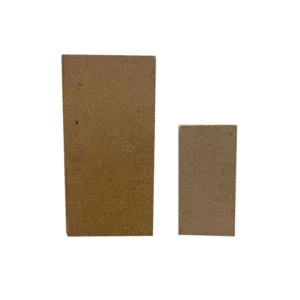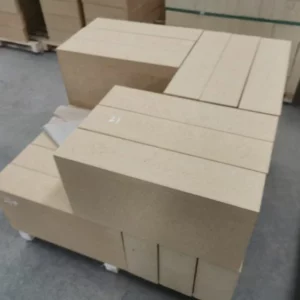Refractory Brick
A Description Of Refractory Bricks
Refractory bricks, also known as fire bricks, are bricks that possess the ability to endure high temperature and serve as a material for construction. Fire bricks are typically white or yellowish white in color and have an approximate weight of 3 kg per brick. Their fusion point must be high. Refractory bricks are also referred to as firebrick or fire brick.
Refractory Brick Much Better Than Common Bricks
It may appear contradictory that a substance that has undergone incineration in ovens, with temperatures exceeding 1,000°C, is incapable of enduring elevated temperatures. Actually, thermal shock is the primary issue. The common brick rapidly expands upon contact with a source of heat. The material contracts after the source discontinues, like when the fire goes out. The stability of the structure can be impacted by sudden temperature changes, causing the formation of cracks and other serious problems. Materials classified as refractory are capable of resisting structural damage, maintaining their resistance and thermal conductivity when subjected to high temperatures. Refractories have a distinct chemical composition from regular bricks, which subsequently affects their color and thermal conductivity, even in the case of bricks.
Composition Of Refractory Bricks By Fire Clay
This type of bricks is made using fire clay. This clay has the ability to endure high temperatures without experiencing significant alterations in its structural characteristics such as melting or softening.
SK32 fire brick should have a greater amount of silica and alumina that is not harmful. In the meantime, this should be the case. The presence of harmful lime, magnesia, iron oxide, and alkalis should be minimized.
- Silica softens at approximately 2,800℉ and reaches a glassy state after fusing at approximately 3,200℉. It undergoes melting at approximately 3,300℉. The fact that it has a high softening and melting point makes it the primary substance for manufacturing refractory bricks
- Alumina has a softening and fusion temperature that is higher than silica. The temperature at which it melts is around 3,800℉. Consequently, it is utilized in conjunction with silica.
- The detrimental components such as Lime, Magnesia, Iron oxide, and Alkalis act as flux to reduce the softening and fusion temperature.
The Process Of Manufacturing Fire Bricks
The process used to manufacture fire brick is akin to that used to produce regular bricks. There is a standard set of procedures:
- Digging
- Weathering
- Tempering
- Moulding
- Burning
3 Types of Refractory Bricks
Three types of refractory bricks exist predominantly. We will now present a list below:
- Refractories suitable for use in acidic environments
- Refractories that are basic in nature
- Refractories of a neutral nature
For more information about our products, please read through the Wholesale SK32 fire brick.


